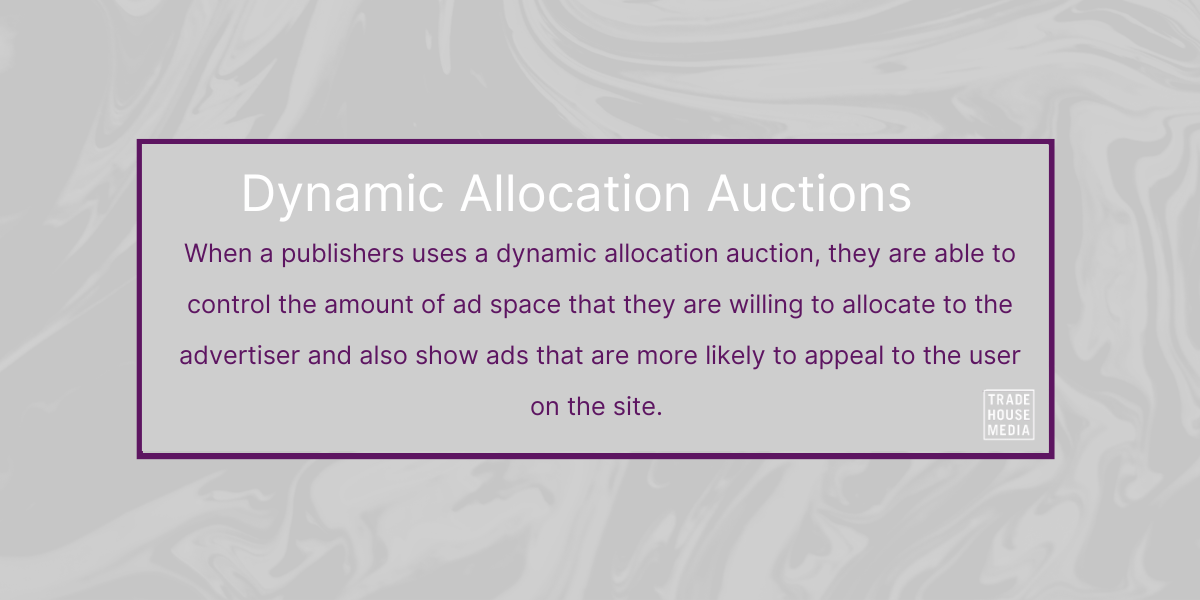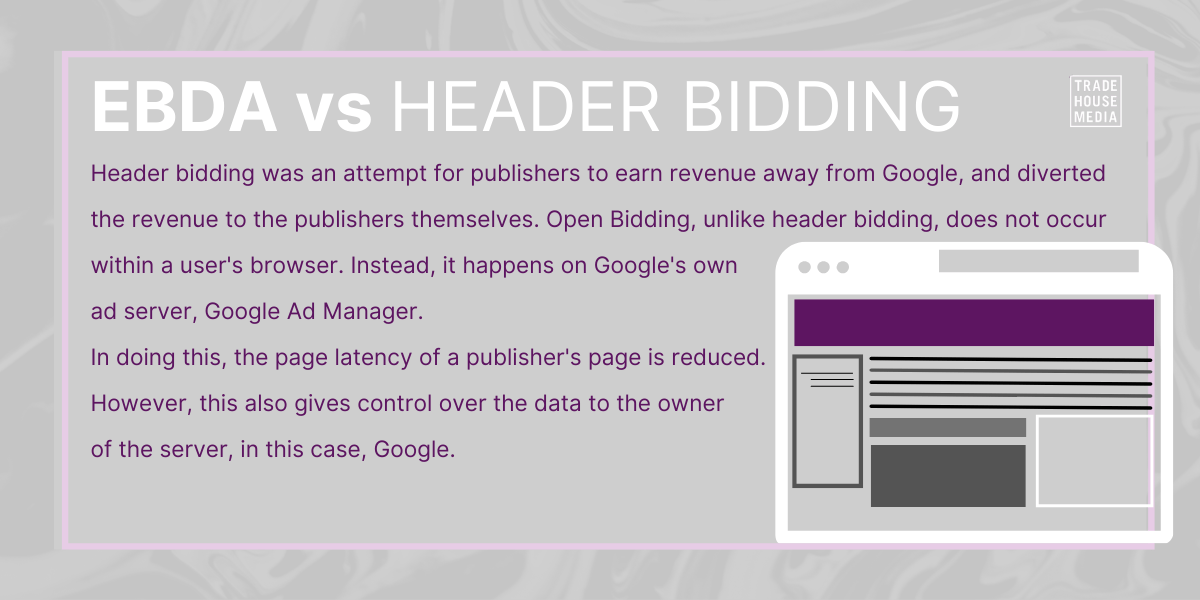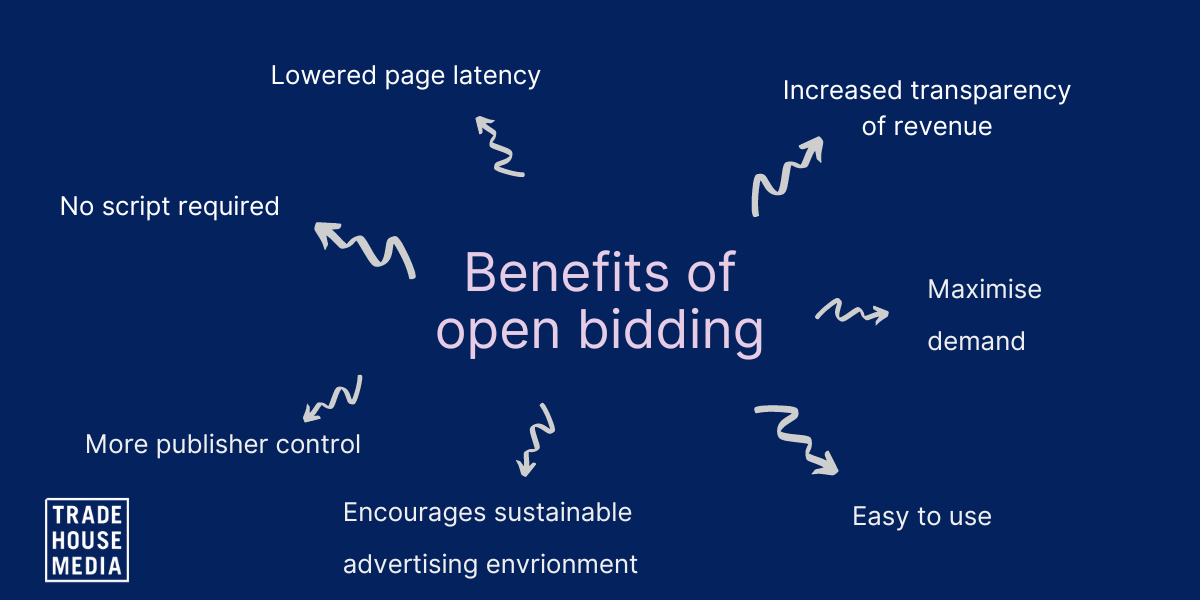Exchange bidding in dynamic allocation, otherwise known as Open Bidding, is an auction hosted by Google where ad exchanges and SSPs bid on publisher ad space. The auction occurs within the ad server and not the user’s browser. The introduction of EBDA enabled both ad exchanges and supply-side platforms the ability to compete with Google’s own Ad Exchange (AdX) for impressions.
What is a dynamic allocation auction?
A dynamic allocation auction is a mechanism for allocating a limited amount of a good or service to a single buyer according to an auction-based price formula. In the advertising world of dynamic allocation auctions, the seller’s objective is to maximise the value of a product or service to the buyer. The publisher, as the seller, wants to maximise the revenue of the ad on their page. By using dynamic allocation auctions, the publisher can control the amount of ad space they are willing to allocate to the advertiser and show ads that are more likely to appeal to the user on the site.

Page RPM is one of many tools that publishers have to track their revenue generation across their digital platforms. Page RPM is a valuable metric to identify any issues in the effectiveness of digital advertising campaigns too.
Because the result is equivalent to eCPM, publishers like Google will use the terms interchangeably.
How does EBDA work?
Open Bidding is essentially an exchange of ad space between multiple parties who are competing for space on a publisher’s page. The EBDA process is as follows:
1. The request for an ad is made
When a user visits a webpage, an ad request is triggered, which is then directed to Google Ad Manager. This request includes information about the user, the device in use and other targeting information.
2. Google Ad Manager hosts an auction to determine the best yield
In this unified auction between eligible items, Ad Managers determine the most relevant ads that fit the available ad space based on the format, shape, size, and traffic.
Google uses yield groups to then separate the most appropriate list of networks and exchanges to participate in the auction, sending a bid request to these partners.
Following that, these partners will then submit their bids in the auction, with Google Ad manager selecting the highest and most eligible ad. Once this allocation and auction are completed, the Google Ad Server will provide the ad to the publisher for display on the page.
EBDA vs header bidding – what’s the difference?
Header bidding was an attempt for publishers to earn revenue away from Google. Header bidding allows publishers to offer their ad inventory to advertisers to bid simultaneously for impressions. It led to increased yields for publishers and a more consistent experience for advertisers.
Open Bidding, unlike header bidding, does not occur within a user’s browser. Instead, it happens on Google’s own ad server (Google Ad Manager). In doing this, the page latency of a publisher’s page is reduced. However, this also gives control over the data to the owner of the server, in this case, Google.
Under both systems, the publisher’s goal is the same: to be able to optimise their bid parameters to get the right ad in front of the correct group and to maximise the revenue they get from the ad.

What are the benefits of open bidding
The opportunity for third parties to compete for ad inventory is an enticing concept for publishers and advertisers alike. Open bidding’s server-to-server technology is believed to help publishers achieve more significant revenue without compromising the user experience of their website.
Lowered page latency
By transferring the hosting to Google’s server, Ad auctions can be held over a much shorter period, leading to a more seamless experience for the user.
Increased transparency of revenue
Dynamic allocation auctions are transparent and accountable to both publishers and advertisers. By using dynamic allocation auctions, publishers can see how much revenue they receive from their ads.
Easy to operate
Open Bidding removes the need for complex header bidding page code and other line items that are part of a header bidding system. Open Bidding requires far less technical expertise to set up than other bidding systems.
Encourages a sustainable advertising environment
By utilising open Bidding, the playing field is levelled for advertisers to bid on available inventory from publishers. Google Ad Manager groups eligible advertisers into yield groups to compete for the space. This ensures that only the most relevant advertisers are displayed based on the user. Dynamic allocation auctions are a win-win for both the advertiser and the publisher and also help foster a more sustainable advertising ecosystem.

Limitations of EBDA
When it comes to the limitations of the Open Bidding system, reporting seems to be where there is the least amount of transparency available from Google Ad Manager. Currently, on the dashboard, publishers are able to view information regarding impressions, bid requests, total revenue, and other metrics. However, data is not available on the exact individual bids made for the space. A metric that is visible when operating with Header Bidding.
Whilst EBDA might be simpler to set up than Header Bidding or other bidding systems, it will take some technical capabilities, and the results between publishers remain varied. It is important to take this into consideration when deciding on your bidding system.
Wrapping up
Advertisers and advertisers are interested in getting the maximum return on their investment. Dynamic allocation auctions allow for the auctioneer to guarantee that the advertiser’s bid will always be the highest, but many publishers are concerned about EBDA’s lack of bidder transparency.
Google has created a system for publisher’s dependent on Google for revenue to monetise their advertising inventory on their site. Publishers opting for Open Bidding because they are looking to remove seconds from their load time might seem trivial, but in reality, this load time has a substantial effect on their revenue.
There is currently no perfect bidding method. Each method has its own weaknesses for publishers looking to increase revenue. The switch to Open Bidding allows for greater revenue generation for yield partners and more effective advertising.

